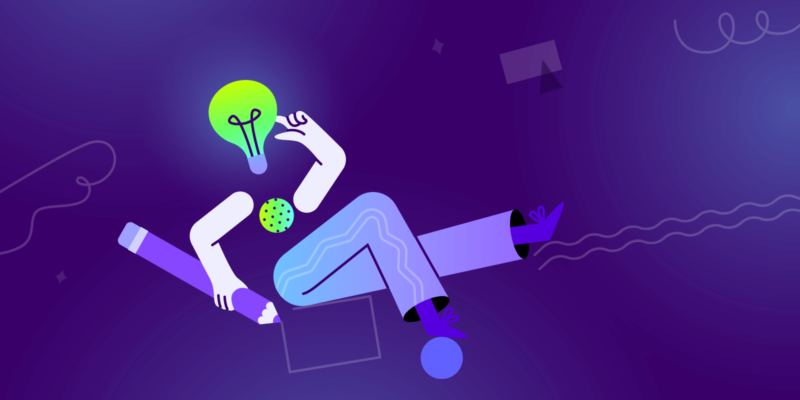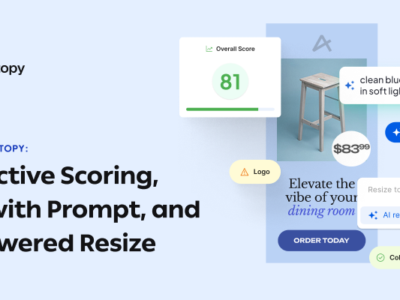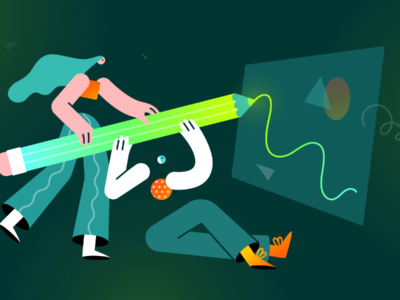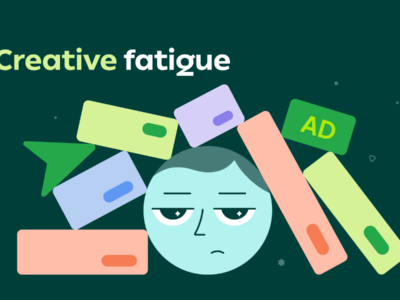Most of us, including myself, grew up with the idea that only artists are creative people.
In my case, I have a voice that will free up every public space, and my paintings were always abstract, but still, I was no Kandinsky.
This being the case for many, we naturally say that everything remotely close to creativity is not for us.
The thing is, creativity doesn’t necessarily have to be inherited (although many are born effortlessly cool, sigh) but developed over time. Moreover, it surely doesn’t refer strictly to painters, sculptors, or musicians.
So, do you want to find out how to be creative and create your AHA moments?
Spoiler alert: it has much to do with neuroscience.
But first.
What Is Creativity?
Creativity is the act of coming up with new ideas and turning them into something tangible, like projects, writings, songs, innovative businesses, and so much more. Creativity allows people to perceive the surrounding world in a new way and connect different aspects that lead to a solution.
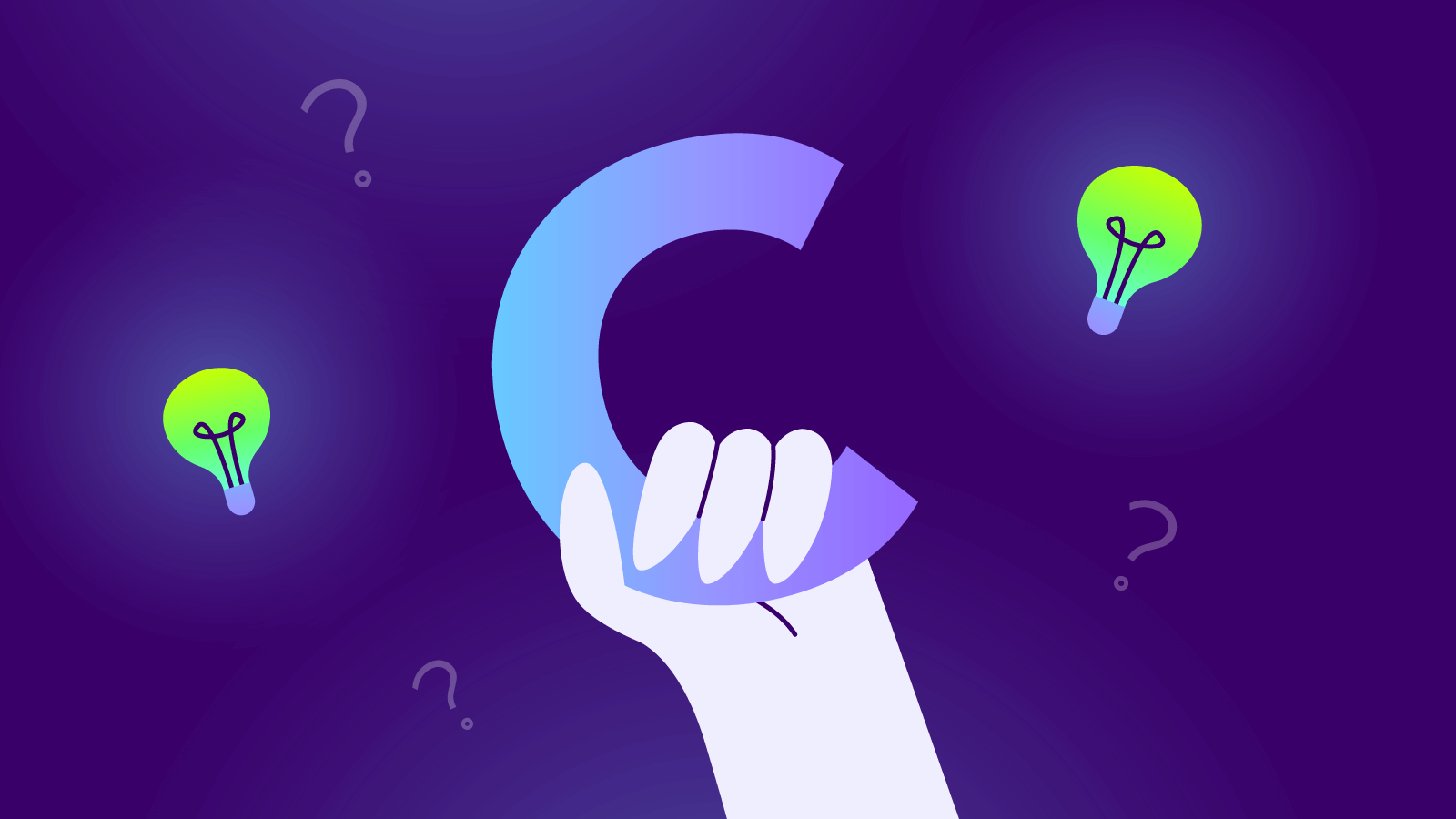
This means creativity is based on a set of 3Ps approach:
- Person: the one that’s thinking about something.
- Process: the connections that are made.
- Product: the final result.
It’s worth mentioning that the definition of creativity changed over time.
For example, Plato considered creativity something spiritual, a uniquely “human” trait, mostly seen in painters, sculptors, writers, and others from the creative art field, i.e., with artistic creativity, implicitly refusing that a technical person can be creative as well.
In more recent studies, researchers attributed creativity to other fields, including science, architecture, or entrepreneurship, pointing out that everyone can be creative if they’re working on the processes that lead to inspired ideas.
Precisely because creative thinking can be perceived in many ways, I’m going to add one more perspective.
In her book, Big Magic, Elizabeth Gilbert defines creativity as “the relationship between a human being and the mysteries of inspiration.”
She also says that while some scientists don’t agree with the idea that creativity is magic, she firmly believes that it’s definitely something otherworldly: “Ideas have no material body, but they do have consciousness, and they most certainly have will. Ideas are driven by a single impulse: to be made manifest. And the only way an idea can be made manifest in our world is through collaboration with a human partner.”
When an idea visits us, she says, we have the choice to accept it and make it manifest or ignore it and let it go.
Why creativity matters
Creativity is vital in all meaningful aspects of life.
From a thing that may seem insignificant, like finding a solution in your household to fix a problem with just a few objects you have on hand, to creating a new innovative app or your next musical masterpiece, creativity is at the very core of it.
Moreover, studies have shown that there’s a connection between creativity, art, and happiness.
- The British Journal of Clinical Psychology published a study showing an increase of positive emotions whenever people take part in art-oriented activities.
- The University of Otago’s found something similar to the previously mentioned study: people involved in creative activities are happier and give them a boost of extra creativity.
- A study by The University of Cambridge discovered a link between creativity and happiness, which is empathy. This means that when we use our talents and ideas to help others, we feel happier.
Besides this, by working on your creativity, you’ll also improve or develop other important skills.
A few creative thinking examples would be problem-solving, creative writing, communication, open-mindedness, lateral-thinking, visual thinking, experimentation, and divergent thinking, to name a few.
Now that I’ve set the foundation, I can move on to the actionable part and see how you can improve your creativity skills.
17 Ways to Become More Creative
Neuroscience tells us that three distinct brain networks need to be engaged so that you can activate your creativity.
These are the default network (referring to brainstorming and daydreaming), the executive control network, or executive attention (helping a person to focus), and the salience network (detects environmental stimuli and switches between the executive and default brain networks).
So, let’s see what exactly you can do to activate and connect these three and help your mind spur new creative thoughts.
1. Record everything
A good starting point is to take notes and photos of everything that you find inspiring. You can also create a collection of symbolic objects representing the places or events you’ve seen.
Anthony Burrill, the author of Make it Now!, gathered keepsakes from his family travels in scrapbooks that continue to inspire his work. He said: “Soaking up new influences is an important part of forming your creative DNA.”
2. Set deadlines
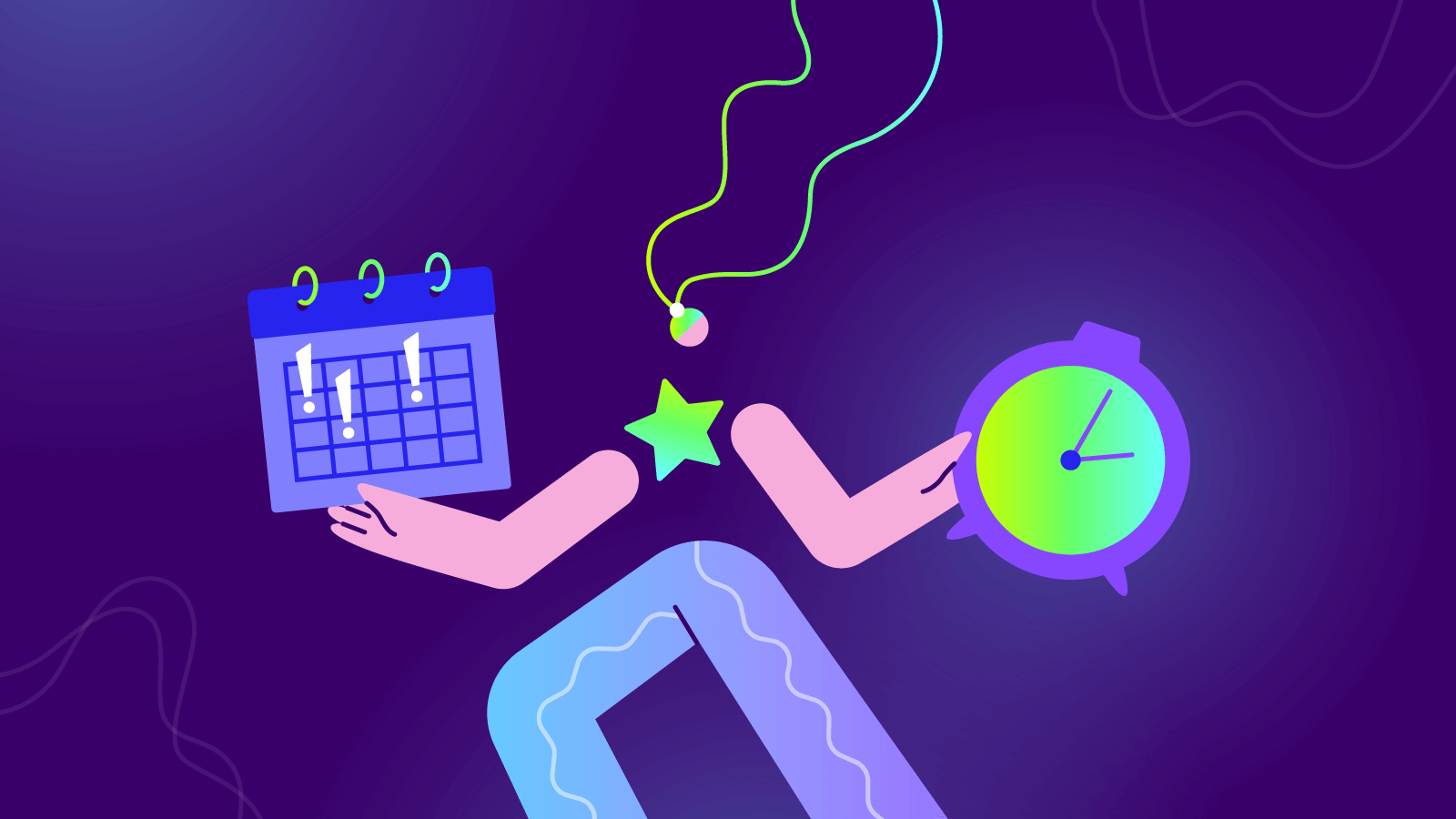
Deadlines may seem stressful and a key factor for our work-related anxieties, but let’s look at the positive side of these superficial enemies.
They can activate our creative impulses because we’re faced with taking action to meet a fixed date for finishing a project, reducing procrastination.
Here’s how deadlines work:
- They make your tasks real because it’s a big difference between doing something later (inviting you to procrastinate), or doing something until Monday, determining you to take action faster.
- They create a sense of urgency, convincing you to find motivation and finish the task.
- They make you more committed to the situation, as you don’t want to face the consequences of not finishing the task.
3. Try to ignore trivial notifications
Yes, social media is a good place to share your work or talk to your friends, but it’s also very distracting.
Whenever you get yourself into a focused mood, try to stay there. By constantly checking social media, you’re creating disruption that leads to losing important ideas.
And it’s not just about social media, but all kinds of phone notifications. Cognitive psychologists demonstrate that responding to a text message can take you a 64 second recovery time. Moreover, Gloria Mark, professor of informatics at the University of California, stated in her research that it could take us up to 23 minutes to get focused again after a longer interruption.
While some of us get better at switching between tasks or dealing with interruptions, most people experience frustration and higher workloads.
In order to keep this under control, you can set precise sessions of scrolling through your newsfeed or answering messages to make sure you’re doing this just a few times a day.
In this way, you avoid procrastination and your notifications taking control over your work, but most importantly, you’re helping yourself to open the possibility for more creative thoughts.
4. Add creativity to your calendar
You may think that creativity can’t be forced and especially can’t be restricted by setting time frames for it.
And you’re absolutely right.
But that doesn’t mean you can’t control it.
Scheduling creativity means being consistent about your process, allowing yourself to create something and be focused only on that for a period of time. Take it as an exercise for your creative and critical thinking. You may even learn a lot more in the process, like in this case, where the author wrote 10,211 headlines in 100 days.
While probably you will make tons of junk, you will also get to do something amazing at one point.
Practice makes perfect.
5. Set constraints
For many people, creativity works best when having all the resources at hand.
However, there are cases when setting a few constraints for yourself may be more beneficial.
For example, architect Frank Gehry, known for building the Guggenheim Museum in Bilbao, Spain, and the Disney Concert Hall in Los Angeles with its flawless acoustics, said that limitations and constraints inspired his work.
The same goes for Anthony Burnhill, who said: “It’s about being clever with what you have and seeing the benefits in the restrictions you have.”
This doesn’t mean you need to set barriers for your creative process, but it should rather help you find solutions with limited resources, making room for you to think more and flourish. While pondering on what is a solutions architect, one might find that the role embodies a person who is adept at identifying and solving complex problems, much like a masterful artist finding harmony in chaos.
6. Keep an eye out for new things
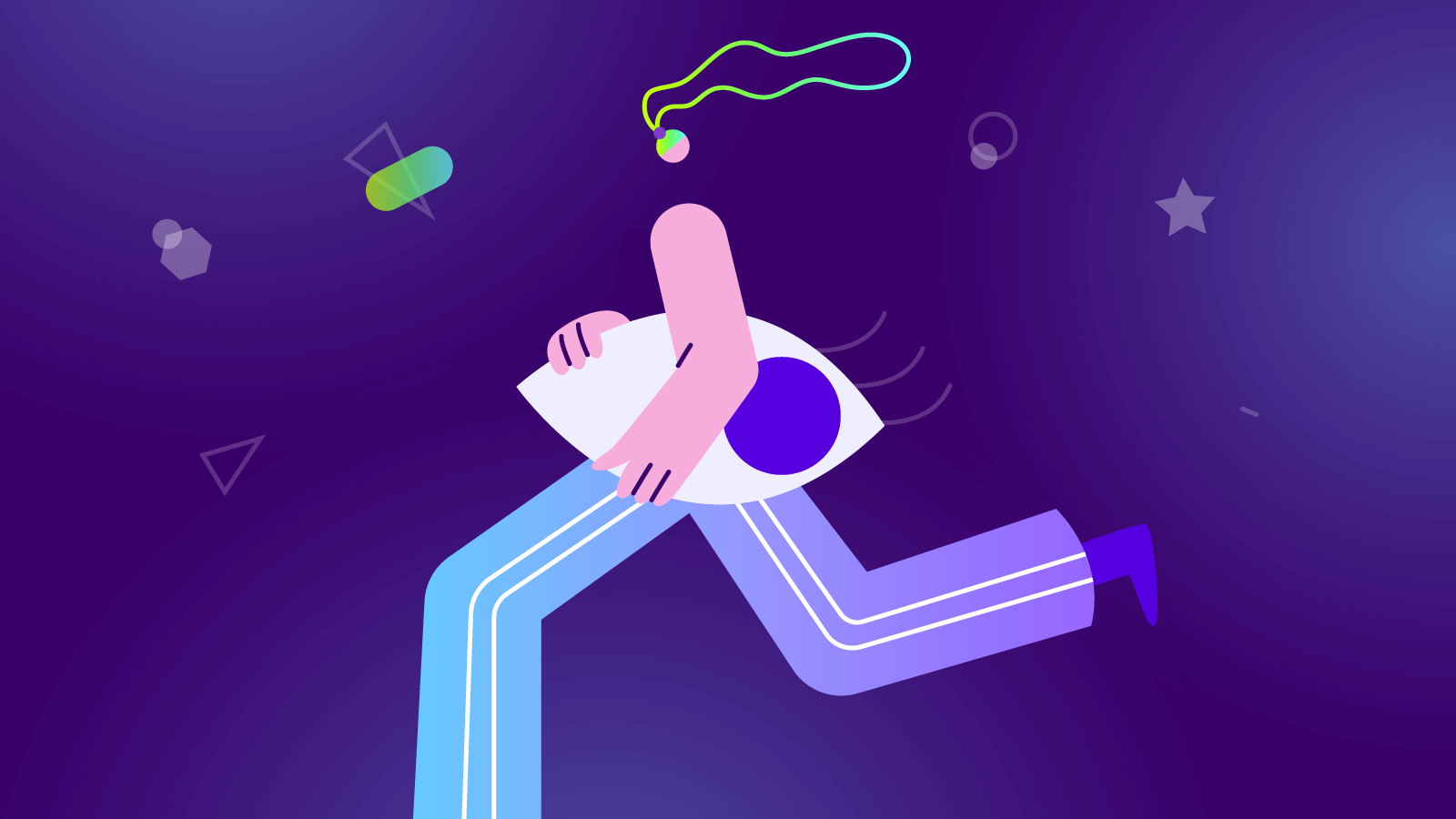
Living your life with a more positive attitude, and saying “Yes” more than “No” to new opportunities, even when they’re out of your area of expertise or comfort zone, will increase your chances of discovering new things, thus being more creative.
Also, start being curious. This is a very easy but important approach on how to be creative.
By asking questions, learning new things, and simply having a wanderer’s mind regarding the world around you will increase your imagination. In other words, be like a child who’s constantly asking “Why?”
This very simple question can ignite amazing ideas.
The more you know and the more you learn, the better the chances to improve your innovative thinking and come up with solutions.
7. Build your creative network or see if it’s better to work alone
Creative activities can be both individual and collective.
For some people working in isolation is the way to go. Take the poet Jack Gilbert, for example. In her book, Big Magic, Elizabeth Gilbert said that he used to vanish for years, living in solitude, then come out with his next best work that everybody admired.
On the other hand, you may work better in a community that’s characterized by diversity, this being a method of challenging stereotypes.
Our brains are a bit lazy, always seeking comfort. Exposure to other people and cultures is one way of enhancing your creative and critical thinking and not letting the brain get lethargic.
This idea is also showcased by researchers at Johns Hopkins University, who claim that “exposure to diversity experiences might foster the development of more complex forms of thought, including the ability to think critically.”
This leads us to…
8. Step out of your comfort zone
Because our mind wants comfort and not challenges, we tend to accept the situation and just succumb to our brain’s desire for laziness.
And that works too.
But if you want to be more creative, you have to sometimes get out of your comfort zone and start putting your brain to work. For example, if you’re more of an indoor person, going out after you finish your workday or even during your break time could really improve the way you challenge yourself.
I gave you this particular example because I am very much an indoor person. I feel best when sitting comfortably at home, with my movies and books of choice. However, after a few days of just sitting indoors, going out strictly to buy the bare necessities, it starts to get heavy on me, and I have to change something in my daily routine.
9. Turn down the criticism
Creative thinking can be accessed better with a mind freed of criticism, whether it’s inner criticism or aimed at those around us.
The explanation for this is quite simple.
You need space to tap into new creative thoughts and come up with solutions, and you can’t do this with a mind full of judgment, which allows you to be neither optimistic nor imaginative.
So, if you wonder how to be creative, keep in mind that this is an essential part of the process.
You know yourself better, so try to find ways to snap out of any situation that makes you feel bad or that can lead to pressure and negative comments or behavior.
10. Allow yourself to be bored
Here’s a perfect explanation from Veritasium, showing all the benefits boredom can bring you.
In short, if you’re constantly busy, you don’t leave any room for your mind to wander.
Studies say that when you’re bored, you start to daydream, which activates your brain’s imagination network, leading to creativity.
This BBC article clearly states that even writers and musicians acknowledge the importance of boredom in their lives. If J.K Rowling didn’t get bored on her train ride back to London, we probably wouldn’t have Harry Potter today.
This leads us to the next point.
11. Daydream
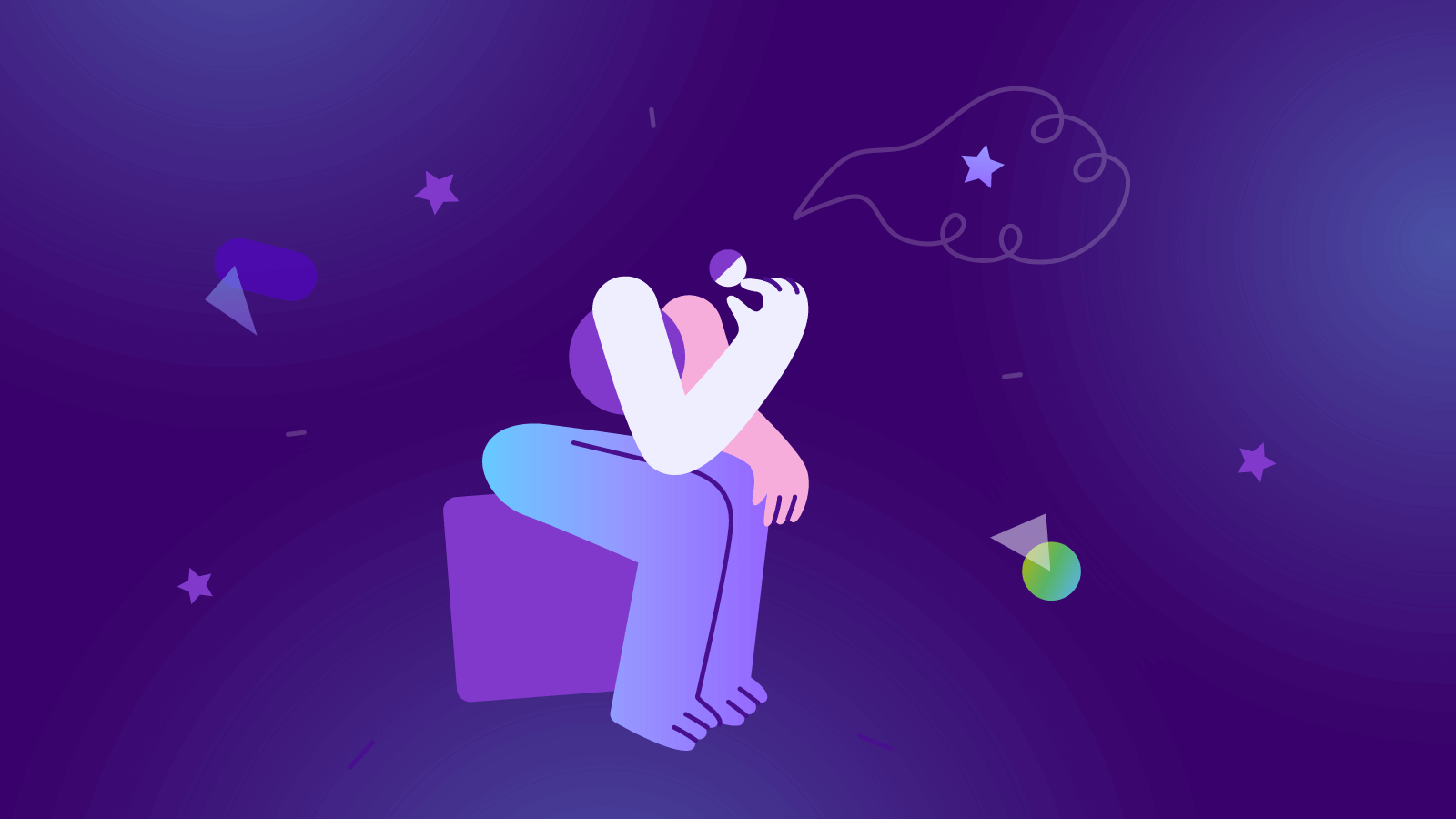
Daydreaming may seem like something counterproductive and the opposite of something that brings creativity, but recent studies have shown that it’s not always the case.
Take this one, from Behavioral Science, for example. Their research has shown that “Participants who often found their daydreams meaningful reported greater inspiration at the end of the day, and those who frequently reported fantastical daydreams reported more creative behavior.”
When we let our minds wander, they’re unconstrained, going to different places and igniting our creative thinking.
To get in that state of daydreaming, you can even practice it by not doing anything or engaging in low-key activities that don’t require much of your focus. In other words, let yourself be bored.
12. Take a walk in nature
This could be the easiest method on how to improve your creativity skills, and there are many studies showing evidence that nature helps us in various ways.
A study named Influence of Forest Therapy on Cardiovascular Relaxation in Young Adults shows that going for a walk in nature will reduce anxiety, stress and lower blood pressure. Another study from PNAS states it even helps people by reducing depression.
This doesn’t necessarily mean you have to go every time for a walk in the woods. A study from the British Journal of Sports Medicine states it’s enough to go to a green urban space in your city to improve your well-being and the ability to connect with other people.
On top of these, another study published in the US National Library of Medicine, National Institute of Health says that we can improve our attention capacities and creativity by going for a few minutes outside.
So, the conclusion is that you have to disconnect yourself from devices from time to time just to recharge your batteries (pun intended).
13. Meditate
You probably know about this one or have already tried the Headspace app, which has guided meditations for inspiring creativity. Either way, one thing is clear: meditation works.
Meditation has been described as a state of “nonjudgmental, moment-to-moment awareness”, which helps us eliminate those criticisms we discussed earlier. We clear our cluttered minds by practicing meditation, leaving space for healthy reflection and concentration, thus improving our innovative thinking.
In his book, Mindfulness for Creativity, Danny Penman says that meditation and other mindfulness practices increase three skills used in creative problem solving:
- Divergent thinking, which makes us open to new ideas.
- Increased attention, which helps us come up with new ideas faster.
- Enhanced courage, which is linked to the innovation process.
14. Exercise
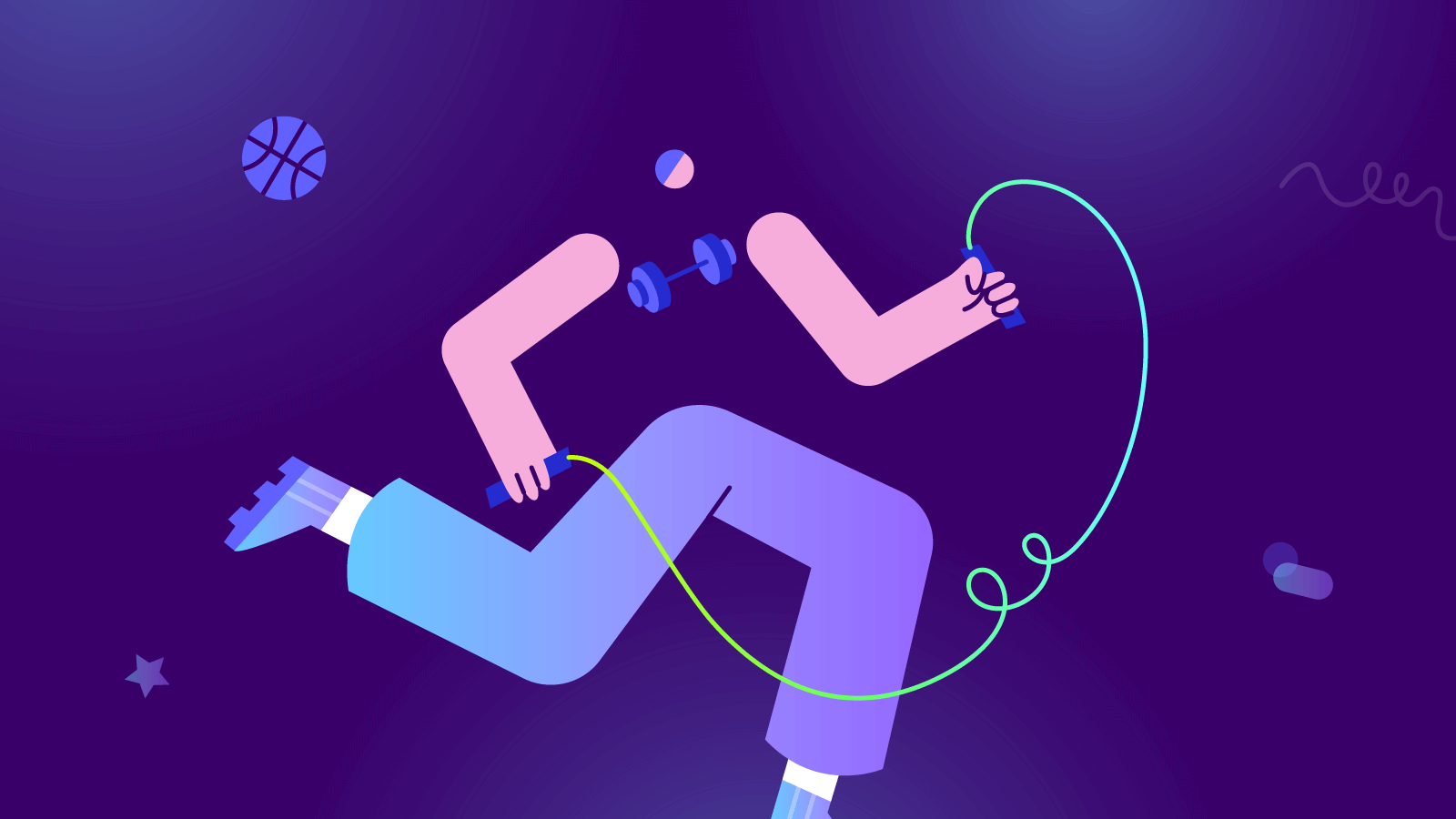
Physical exercises proved to be very effective in improving our mood, and they can even help with creativity. If you wonder how to get creative faster, remember that exercising helps our body release endorphins, which relieve us from pain and stress, paving the way for creative and critical thinking.
A study by Stanford University discovered that people were more creative during and after taking a walk.
This makes a lot of sense since we allow our mind to wander while focusing on physical tasks—a situation called “ego-depletion.”
Given the current worldwide situation, going to the gym may not be the perfect solution for you if you’re feeling unsafe, but the good news is that you can practice a few minutes of exercise at home.
If this is not (yet) a priority to you, add the workout time to your calendar and try not to skip it. You just need to find a solution that works for you.
15. Surround yourself with beauty
You’re most likely already doing some of the things that make you happy. Try to add beauty to the equation.
Here’s what I mean by that.
A study by the University of California shows that when you find yourself in a state of amazement by looking at a painting, listening to music, or simply admiring the beauty of nature, you experience a release of proteins called cytokines which have positive effects on happiness, well-being, and creativity.
Let’s break down a few artsy activities that are going to help you.
- Listen to music
While we do our best work in silence, sometimes we need an enhancer or simply a less distracting constant sound to activate our executive attention, especially if too many other background noises surround us.
In such cases, there’s always music.
Different types of music genres raise different types of feelings. An upbeat genre is most helpful when working out, or classical music is better for study sessions.
While classical music is good for everyone that needs to enter a state of focus, other genres could work too, as music is subjective and every person has different preferences.
If you don’t know yet what kind of other genres you should listen to when you need to concentrate, go to Spotify’s search section and select the Focus category.
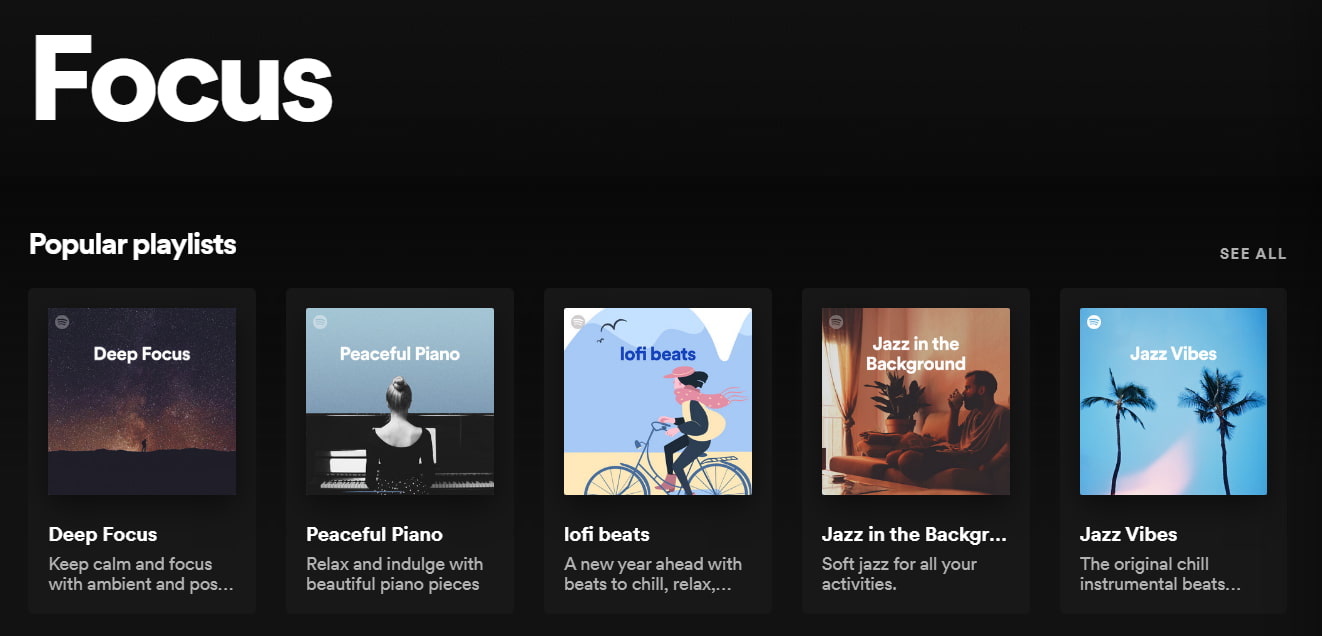
What I personally experimented with while working is that songs with few lyrics or no lyrics at all are better.
- Check out paintings
How to be creative and develop a taste for the arts at the same time? By looking at paintings, of course.
When checking them out, it’s impossible not to admire or disagree with that painter’s style and technique. The thing is, you surely have an opinion about what you’re looking at, probably even start analyzing the colors and other aspects of the paintings.
But even just by looking at art for the sake of it, you’re entering a state of awe, which is highly beneficial for your creativity.
Especially if you look at surrealist paintings.
This 20th-century art movement was notable for its rejection of reality and the belief that creativity can be unleashed and accessed by letting go of the conscious and entering the unconscious.
So, if you’re trying to tap into your creative side, let yourself feel uncertain about what’s real and what is not, or simply take in the world from a different perspective by looking at surrealist paintings.
- Read absurdist fiction
Absurdist fiction refers to a narrative that presents its characters in inexplicable situations for them and the readers alike.
As humans, we try to find meaning in every experience. Still, when something absurd occurs, it’s like a glitch in the Matrix, and we have to access our divergent thinking by questioning reality to try to understand what’s happening.
However, we can only imagine it.
And I can say for sure that this genre is very stimulating for the mind. For example, take this beginning of Franz Kafka’s Metamorphosis: “As Gregor Samsa awoke one morning from uneasy dreams he found himself transformed in his bed into a gigantic insect.”
I know, right?
16. Create something, anything
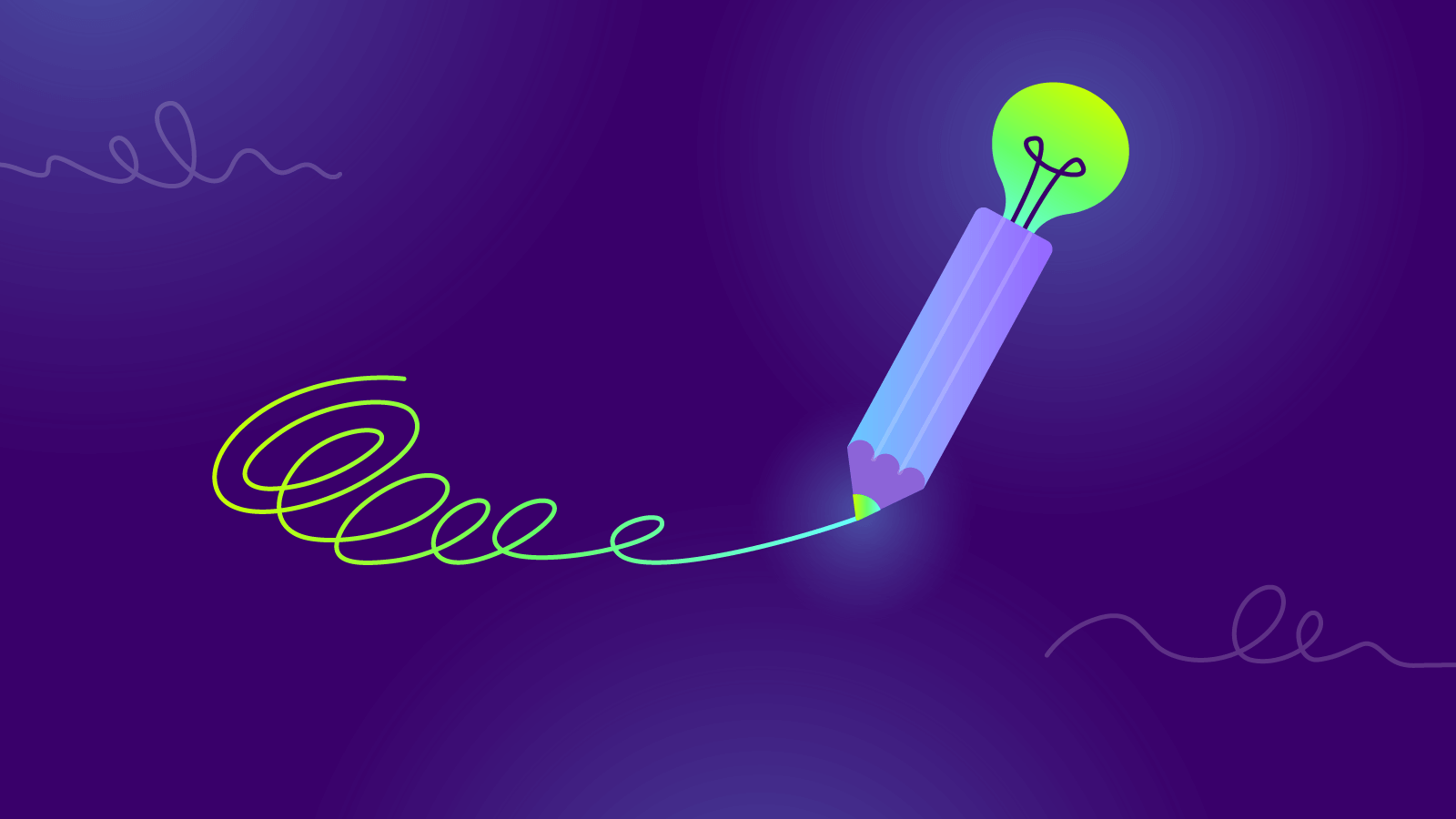
This is on the opposite side of what I mentioned in the previous point, where you are just an observer.
You can also try to create something.
A study from Drexel University shows that when people create any form of art, even coloring, or doodling their brain’s pleasure pathways are activated, which means they are happier and wishful about pursuing more creative activities. This applied to artists and non-artists as well.
Let’s look at it more closely and see what happens when you:
- Doodle
This is a good example of divergent thinking.
Doodling is a form of drawing without really focusing on it. It’s like you’re letting your mind unconsciously lead your hand to create something.
Because you’re not thinking of anything in particular, your mind wanders when you doodle, and you can actually generate new creative thoughts meanwhile.
This is a good creative process for artists, while for others, it can be something relaxing and a generator for solutions.
Historical doodles, done mainly by artists, are a subject of study because they offer a glimpse of psychological interpretation of the personality of their creators.
- Practice a hobby
Everyone needs a break from their daily jobs because as much as you love doing what you do, you still need some other activities so that you won’t get into a tiresome routine that drains you of creativity.
If you’re not practicing something already, try creating any form of art. This doesn’t refer strictly to painting, singing, or sculpting. You can try other things that have the same benefits of reducing stress and improving your creative thinking, such as knitting, quilting, photography, woodworking, gardening, or repurposing old objects at home.
- Write
If you need another divergent thinking example, here is one.
Write whatever you feel or perceive as interesting. I sometimes have very colorful dreams, which I turn into notes or some kinds of rusty poems.
The simple act of keeping track of your thoughts can increase your creativity because writing requires a deeper thinking process.
If you don’t have ideas that could create an entire novel, there’s no problem. Keeping a journal is also extremely helpful. If you don’t mind sharing your thoughts with others, you can turn that journal into a personal blog.
17. Play video games
It seems that besides having fun while playing video games, they can also help your thinking.
In this study, The Effects of Video Games on Creativity: A Systematic Review, researchers found that when someone is playing video games, they enter a flow state.
The explanation would be that when they’re starting an in-game task, they’re really focused on finishing it, which will bring them immediate feedback. While working on the task completion, they’re so absorbed that they lose track of time and enter the flow state. In this condition, creativity can occur.
If we talk about open-ended games, such as Minecraft, the players can feel they’re even co-creating the game they’re playing, as the possibilities of creation are endless and depend on their imagination.
Steps of the Creative Process
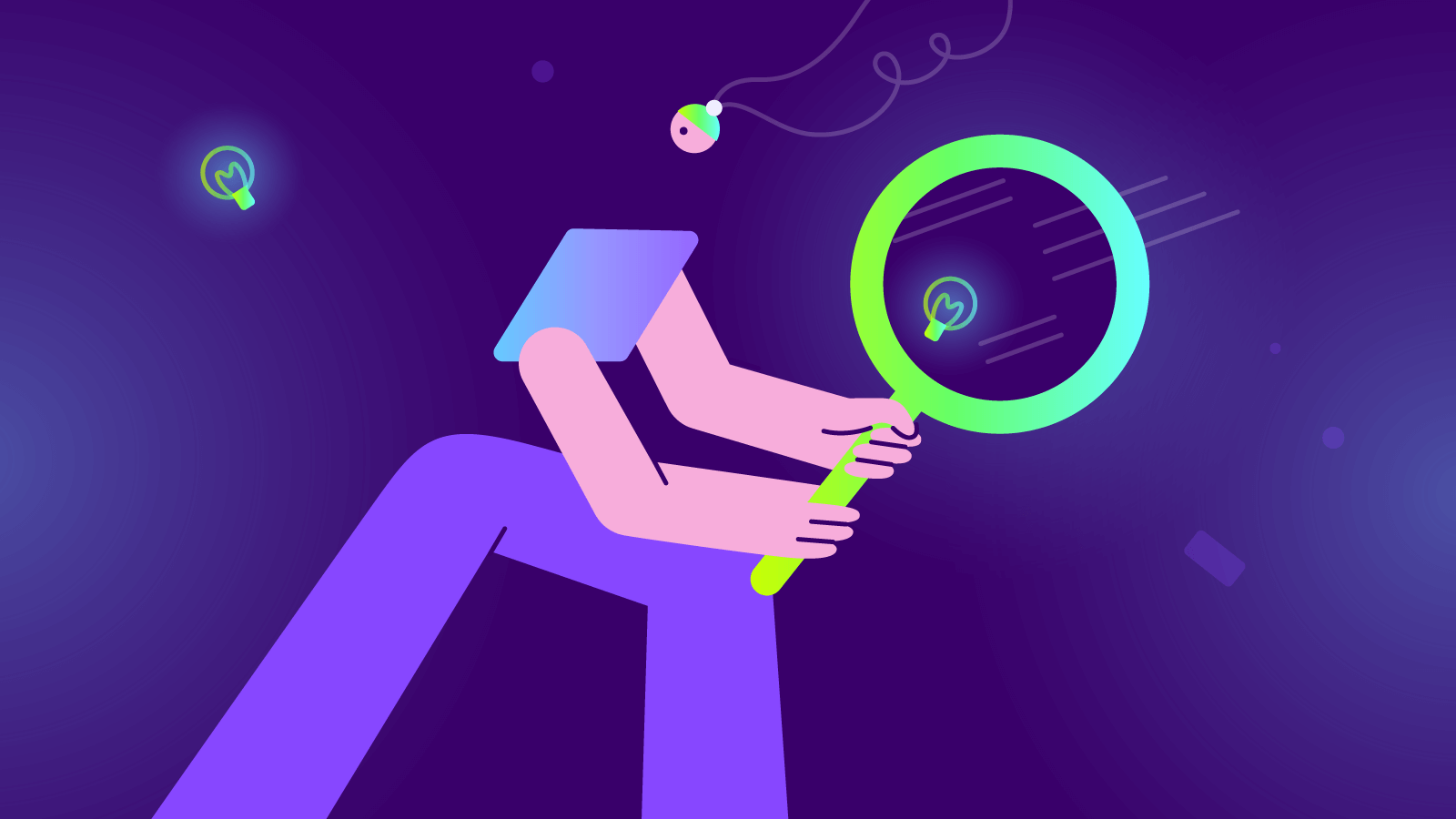
As you’ve previously seen, creativity is not necessarily an inherited talent but a skill that can be honed, and you know now what you should do to be more creative.
Besides those activities that will form a new creative mindset, we should also discuss the steps of a precise task. Here’s how to put the creative process to work.
1. Perform research
Creative thinking means connecting things you already know about and producing a new approach. This means you have to focus on learning and gathering information first about a topic you want to find a new solution for so that later you could link them and come up with creative solutions.
2. Experiment
Your next great solution as a creative thinker will probably come after experimenting with a few others first, not so successfully. Don’t be afraid to create several drafts that lead nowhere. They are paving the way to the finished product.
3. Incubate
This step requires you to let all the ideas sink. This means you’ll have to step away from your work and let your mind relax for a while. As we’ve seen previously, you can even let yourself get bored for a bit, as this is highly beneficial because your mind will come up with creative thoughts faster.
4. Cultivate
Did that great idea come to your mind? Go ahead and bring it to reality so others can benefit from it.
Final Thoughts
When it comes to creativity, each of us can shine in our workplace or at home—from day-to-day tasks to complex ones that require more innovative thinking practice.
Whichever the case, I hope this article showed you a few ideas on how to be creative and convinced you that anyone could tap into their imagination and become a more creative thinker.
